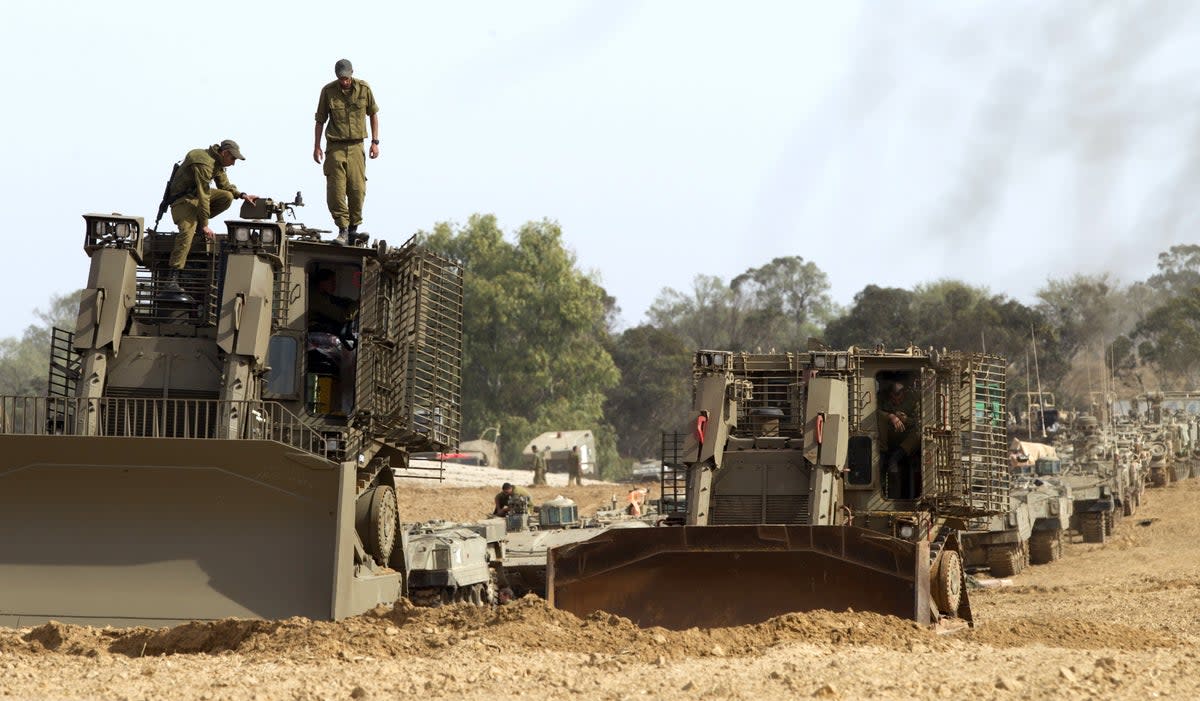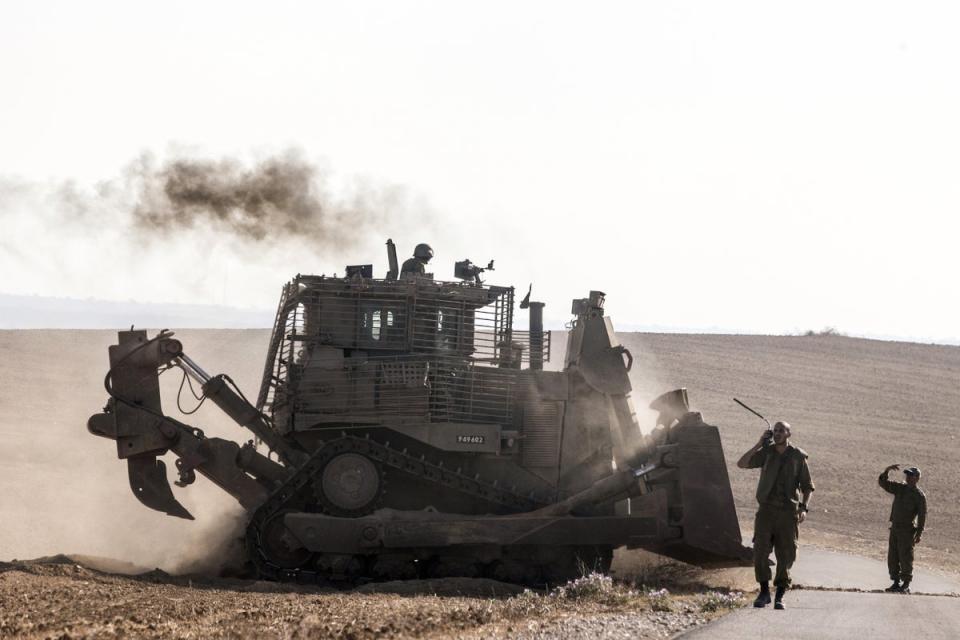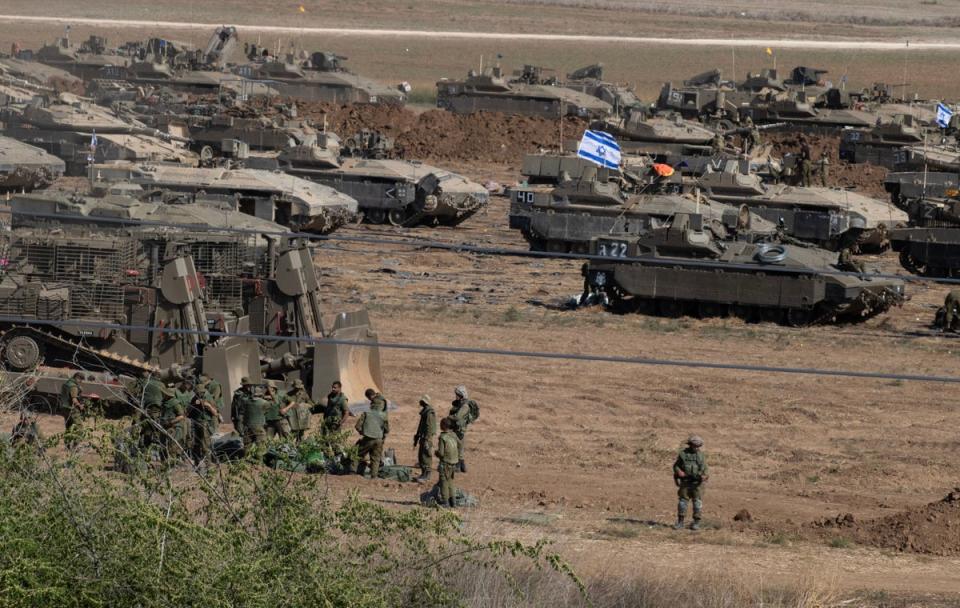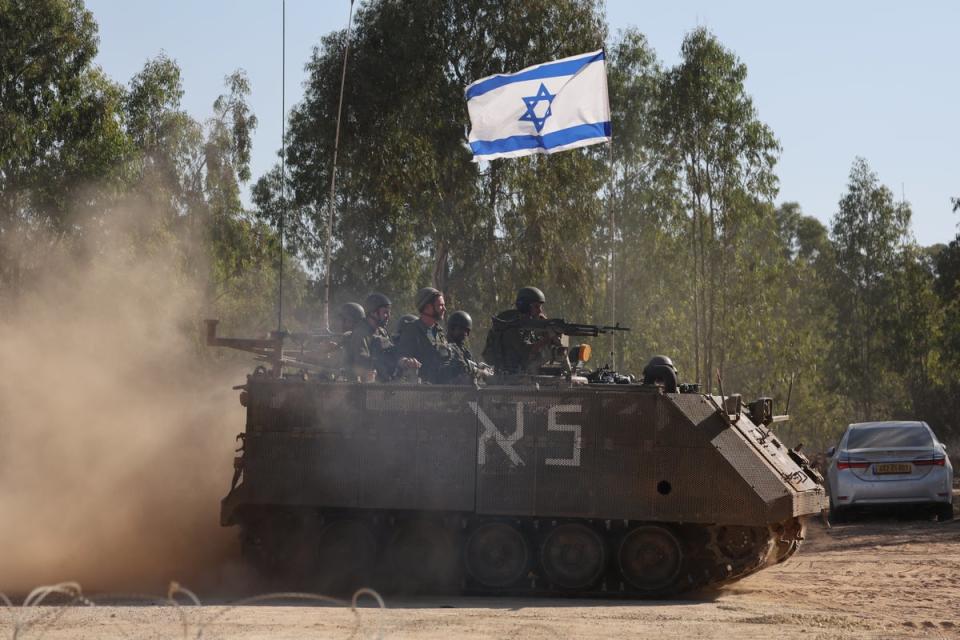What are Israel’s D9R bulldozers? £1m armoured ‘Teddy Bear’ tanks set to lead soldiers into booby-trapped Gaza

As thousands of Israeli soldiers mass at the Gaza border ahead of an anticipated ground offensive, a heavily modified armoured bulldozer dubbed the “Teddy Bear” is set to lead the charge.
The heavily-armoured vehicles, manufactured by the US tractor company Caterpillar, will be used to soak up enemy fire and clear a path through cluttered streets intermittently mined by Hamas, the militant group in control of the enclave.
In a national address on Wednesday, Israeli prime minister Benjamin Netanyahu said forces were “preparing for a ground invasion” of the Gaza Strip.
It is a feat that has not been undertaken before on such a scale, in part due to the risk to life for Israeli soldiers conducting the offensive is significant.
The roughly 100 “Teddy Bear” bulldozers expected to cross into the enclave in front of the troops will drastically minimise this risk.
What do we know about Israel’s bulldozers?

The Israeli D9R bulldozers weigh roughly 62 tonnes and are four metres tall and wide, and eight metres long.
In 2015, they were upgraded with “slat armour”, also known as cage or bar armour, to ensure they were protected against rocket-propelled grenades (RPGs), a weapon frequently used by Hamas.
The armour effectively surrounds the entire vehicle. Bullet-proof glass and armoured cabin pillars also augment the slat armour.
The D9Rs have myriad functions and extensive experience on the battlefield, particularly in Gaza - they were central to the Israeli offensive into the enclave in 2008/9, known as Operation Cast Lead.
Their primary functions are to clear paths of booby-traps and obstructions for soldiers behind them to march through unharmed, as well as construct defensive positions for the troops to take cover behind.
In an urban warfare setting, like the Gaza Strip, they also double up as offensive vehicles.
Modifications to the bulldozers over the past two decades include the fitting of a crew-operated machine gun and grenade launchers.
The cost of a new Cat D9 bulldozer is at least $900,000 (£739,624) but extensive “slat armour” editions and offensive capabilities mean the vehicle’s total cost likely exceeds £1 million.
They are operated by a driver and a commander, who is responsible for weaponry and communications. All operators will be members of the Combat Engineering Corps, a unit made up of four batallions that was founded in 1947.
How will Hamas counter the bulldozers?

Drones will play a crucial role in Hamas’ reaction to the insurgency and, given its size and significant bulk, the RD9s will not be hard to hit.
And while the armour added in 2015, estimated to put 15 extra tonnes on each vehicle, will improve their resistant qualities, it will also likely depreciate their agility and speed to some degree.
Videos from 7 October, when Hamas broke into Israel, have already shown the militant group’s ability to strike and injure a heavily-armoured Merkava main battle tank using quadcopter-dropped munitions, which are bombs dropped from commercially-available drones.
Federico Borsari, an expert on drone warfare, told The Independent that this “remarkable attack” showed that Hamas “will create problems for mechanised units” when they move into Gaza, including elements of the Engineering Corps operating the RD9s.
A brief history of bulldozers at war

The British Army pioneered the use of bulldozers in a warzone during the Battle of Normandy, aka Operation Overlord, in 1944.
The Caterpillar D7s, a predecessor of the D9, were used to clear obstacles from the French beaches and quickly make the roads ahead accessible by removing rubble and filling in bomb craters.
The US Army then used D9 bulldozers during the Vietnam War to clear forests.
Combat use of Caterpillars in Israel stretches back to the Sinai War of 1956, the Six-Day War in 1967, the Yom Kippur War (1973) and the 1982 Operation Peace for Galilee.

 Yahoo News
Yahoo News 
